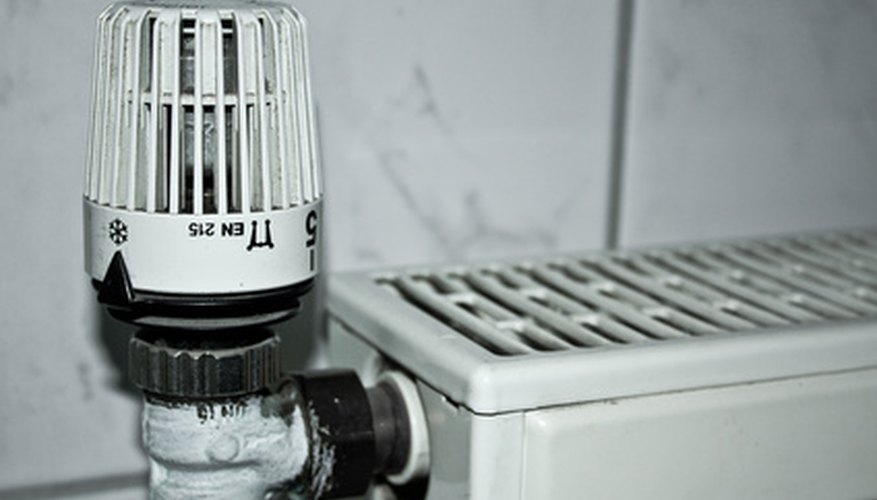The two major forms of heating in homes are either oil filled heaters or convection heaters. They tend to work on similar principles of heating the surrounding air, although the method by which they circulate the air is different. There are stark differences in price for the most part as well as energy consumption, making a thorough evaluation of specific needs essential before you purchase either.
Concepts
Oil filled heaters work by circulating a heated oil throughout the coils of a radiator. The oil is a special heat conserving oil that will retain the heat for long periods of time and not require continuous reheating. The air surrounding the heater is warmed by the coils and radiates outward and upward. A convection heater, better referred to as a forced air heater, sucks the air from a room, heats it in a central chamber, such as a furnace, and blows the heater air back into the room.
- Oil filled heaters work by circulating a heated oil throughout the coils of a radiator.
Advantages of Oil Filled
Oil filled heaters are by far the cheaper option, both in initial cost and in continuing utility bills. They require a generally lower wattage than other forms of heating and, because of the heat conserving oil, they remain at that temperature for a long time. While central heating often ends up blowing the rising warm air to the room's ceiling, the gradual radiating heat of an oil-filled heater keeps the temperature uniform. Also the small size can fit under a desk, so those who have different heat preferences in a room can choose this option. They are also much safer to have around and less of a fire risk.
- Oil filled heaters are by far the cheaper option, both in initial cost and in continuing utility bills.
- They require a generally lower wattage than other forms of heating and, because of the heat conserving oil, they remain at that temperature for a long time.
Advantages of Convection Heaters
Convection systems heat a room much faster. If a house is already equipped with a system of ducts, a convection system will be by far the quickest option. Using a ducts system will keep rooms in the house heated more uniformly than individuals with personal space heaters. Individual convection heaters don't have this advantage, but again will circulate the warmed air more quickly.
- Convection systems heat a room much faster.
- Individual convection heaters don't have this advantage, but again will circulate the warmed air more quickly.
Disadvantages of Oil Filled
Oil filled heaters can be quite slow. The process of warming the oil then warming the air then radiating this warmed air around an area takes time. Very large rooms are not well served by small oil filled heaters unless they are left on permanently which, although they do not require much power, can over time become pricey. Should there be a leak in the oil from the coils, it can cause skin irritations or burns.
- Oil filled heaters can be quite slow.
- Should there be a leak in the oil from the coils, it can cause skin irritations or burns.
Disadvantages of Convection Heaters
After some time in heating a room they end up being quite inefficient because, as already mentioned, most of the hot air ends up at the ceiling. If they are placed too close to a window and there is a draft, the cold air will recirculate through the heater constantly and potentially cause it to overheat. In fact, convection heaters are some of the leading causes of fires in houses. They also draw quite a bit of power and over time will be the more expensive option.
- After some time in heating a room they end up being quite inefficient because, as already mentioned, most of the hot air ends up at the ceiling.
